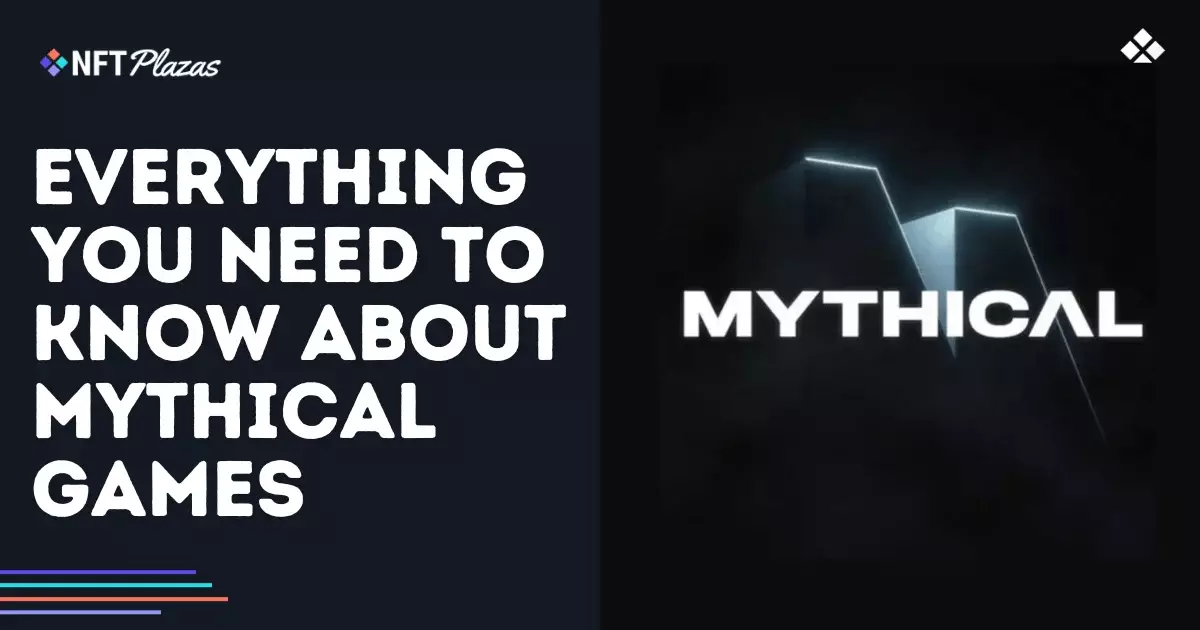Mythical Games entered the gaming scene with a seemingly revolutionary vision: leveraging blockchain technology to empower players with genuine ownership of in-game assets. For years, the gaming industry endured the limitations of centralized control, where items, skins, and collectibles existed solely within a publisher’s domain. Mythical’s bold claim was to flip this paradigm — allowing players to buy, sell, and trade digital goods in a transparent, decentralized marketplace. The allure was undeniable, promising a future where gaming becomes not just a pastime, but a real economy fueled by blockchain innovations.
However, beneath the glossy veneer of endorsements and high-profile collaborations lies a stark reality. The core promise of Web3 — true digital ownership — remains largely unfulfilled for the vast majority of players. Mythical’s platform and games have shown that while blockchain integration can be technically executed, it often entails a trade-off: complexity, volatility, and a detachment from conventional gaming values. Their approach, aiming for simplicity by hiding blockchain mechanics behind familiar interfaces, is commendable but superficial. It hints at a future where players can seamlessly enjoy blockchain-enabled assets without wrestling with cryptocurrency wallets or technical jargon, but this utopian vision is still aspirational.
The entrenched skepticism about blockchain’s place in gaming stems from unanswered questions about utility, longevity, and user engagement. Mythical’s attempt to marry AAA-level gameplay with web3 mechanics is ambitious but fraught with challenges. The infrastructure, although innovative, is still beholden to the unpredictabilities of the crypto market — volatile tokens, fluctuating asset values, and regulatory scrutiny threaten to undermine the very stability that many gamers seek. Mythical has made strides, but the industry’s overall translation of blockchain technology into meaningful, mainstream experiences remains elusive.
Strategic Missteps and Industry Volatility Reflect a Broader Disillusionment
The company’s rapid rise to unicorn status, fueled by hefty investments from giants like Andreessen Horowitz, painted a picture of unstoppable momentum. Yet, behind the scenes, Mythical’s journey exposes the fragility of the Web3 gaming dream. Internal disputes, such as the departure of key executives, underscore the turbulence lurking behind rapid scale-ups. Litigation over intellectual property and core plans reveal a level of dissonance within the company’s leadership, raising questions about long-term coherence and strategic vision.
Moreover, the crypto downturn and ensuing economic headwinds forced Mythical to trim its workforce and recalibrate ambitions. The shutdown of the PC version of Blankos is more than a setback; it is a stark reminder that novelty cannot sustain engagement in gaming. Players have high expectations for entertainment, not just for blockchain features. The pivot to mobile platforms highlights a recognition that accessibility and ease of use are critical for growth, yet it also signals a retreat from earlier ambitions of establishing blockchain as a core gaming pillar.
The broader industry’s struggles with Web3 aren’t isolated to Mythical. It exemplifies a fundamental misalignment: the innovation touted by blockchain advocates often clashes with the pragmatic needs of gamers, who prioritize seamless play, compelling content, and tangible value. Mythical’s experiences demonstrate that blockchain integration, at the moment, is more about branding and hype than about creating an authentic, sustainable gaming ecosystem. Their venture reveals the difficulty of translating blockchain’s theoretical benefits into day-to-day gaming realities that resonate with the mainstream.
Can Mythical Succeed Without Falling Into the Hype Trap?
Despite setbacks, Mythical’s core strategy remains intriguing. Their attempts to partner with traditional brands like NFL, FIFA, and luxury fashion houses like Burberry indicate a belief that culture and commerce can intersect through blockchain. These collaborations generate buzz and bring familiarity to a space riddled with skepticism. Yet, vital questions persist: are they creating genuine value, or simply riding the wave of hype? Their focus on bringing blockchain mechanics to established brands risks alienating core gamers who view the technology as gimmicky, rather than transformative.
Critically, Mythical’s approach underscores an implicit gamble: that the promise of ownership will eventually outweigh the initial skepticism and technical hurdles. However, succeeding in this arena requires more than just adding blockchain as a feature; it demands a fundamental shift in how games are designed, played, and perceived. The company’s investments in diverse projects suggest an understanding that diversification is key, but also highlight the uncertainty that lingers in the industry. Without mainstream gamer adoption, these efforts risk becoming niche experiments or marketing stunts.
Looking forward, Mythical’s ability to navigate the turbulent waters of Web3 gaming hinges on its willingness to prioritize user experience and tangible utility over fleeting hype. This entails simplifying blockchain’s complexity, fostering community governance, and ensuring that gameplay remains central to engagement. If they can accomplish this while avoiding the pitfalls of speculative mania, Mythical might still carve a meaningful niche. But history shows that the tech-driven fad of blockchain in gaming often fades as swiftly as it appears, unless genuine, value-driven gameplay becomes the core narrative — a feat that Mythical’s current trajectory does not fully assure.
In essence, Mythical Games encapsulates both the potential and peril of blockchain in gaming. Their journey is a testament to the industry’s hopeful yet cautious optimism — that digital ownership can redefine play, but only if the core entertainment remains compelling and accessible. Until then, the industry remains in a game of patience and skepticism, waiting for the technology to catch up with its promises rather than the other way around.

